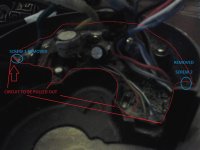I haven't reprogrammed my controllers yet. I will get to that soon. I have the display extension cable and USB serial hardware ready to go.
I'll do a repair on both and test some new settings when I get the time.
I got a load of mosfets from here.
http://www.rapidonline.com/electronic-components/p75nf75-mosfet-t0220-80a-75v-47-5622
I'll do a repair on both and test some new settings when I get the time.
I got a load of mosfets from here.
http://www.rapidonline.com/electronic-components/p75nf75-mosfet-t0220-80a-75v-47-5622


